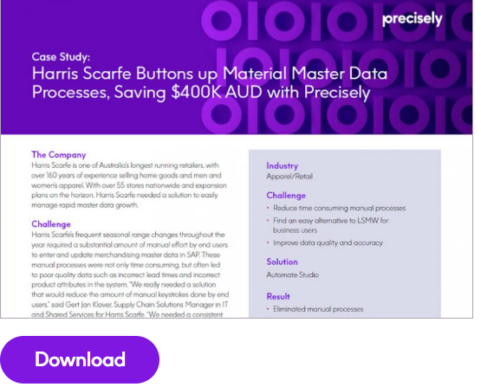The article discusses the challenges and solutions related to legacy ERP systems in the public sector, emphasizing the need for digital transformation to improve efficiency and citizen services through agile approaches and intelligent automation.
ERP systems are a feature of governmental computing as much as the private sector. The issue is how much do they stand in the way of digital transformation projects that are designed to save taxpayers money as well as deliver better services to voters.
Having led large-scale public sector reform initiatives in both the UK and Canada – as well as holding a number of positions in No 10, the Cabinet Office and HM Treasury – similar questions have come across my radar frequently. Should governmental departments stick with legacy ERP systems in which they’ve already invested, even if they don’t meet all their business needs, or do they start over? How can they not only make do with the systems they have in place but improve processes and manage implementations and upgrades more efficiently?
The latter typically tends to be the chosen path for many governments. However, the complications and challenges that arise from even the smallest proposed tweaks to legacy governmental systems are all too familiar, particularly where front-line citizen services are concerned. For example, a lack of channel visibility and a consistent approach to routing email queries can cause duplicate efforts among agents, missed service levels, and inconsistent responses, all of which cost time and resources. Given citizens and businesses count on governmental services for quality of life, personal well-being, as well as positive business outcomes, updating governmental computing systems in a way that maximizes efficiencies whilst minimizing downtime is critical.
Reimagining the digital transformation journey
There’s no doubt that ERP systems are the bedrock of many public sector organizations. Few technology decision makers would argue that centralizing business IT systems have meant a sacrifice in business agility, and there’s no doubt that monolithic systems are difficult to modify and expensive to maintain. No public sector organization can afford to continue to spend over 70 percent of its technology budget stuck in maintenance and support mode, leaving only the remaining 30 percent to growth and transformation. The statistics about project failures are staggering, and no organization can afford to take those risks and ignore the new way.
Effectively combating resource wastage where legacy ERP systems are concerned requires a 360 degree, holistic view of tasks and communications across all channels to allow for effective triage and task prioritization. Applying AI-powered decisioning and intelligent automation to route queries more intuitively to the right support agent can help provide more timely delivery of accurate information. This will ultimately drive better outcomes to enable a higher standard of customer service.
Take Shared Services Connected Ltd. (SSCL) for example, a provider of shared services for over 20 government departments. From the Metropolitan Police to the Ministry of Defence, SSCL provides support to nearly 600,000 public sector employees in a constantly evolving environment. For years, SSCL relied on manual, resource-heavy processes to manage payroll, respond to queries, and oversee administrative tasks. But taking an age-old approach to handling 7 million transactions, 2.5 million calls, 2 million invoices, and £50bn in annual payments soon became a complicated endeavor. SSCL knew it needed a faster, more efficient strategy for ensuring the delivery of services to keep pace with the times.
To deliver on updating these systems, SSCL deployed SSCL Service+, a streamlined process for tracking, managing, and resolving workplace queries while delivering end-to-end visibility of work across multiple channels. Based on intelligent automation technology, the platform is not only helping SSCL improve operational efficiencies but also fostering a more productive and engaged workforce. As a result, SSCL reduced query volume by 60 percent, while allowing workers to focus on more critical tasks rather than non-value-added activities. In doing so, SSCL was able to streamline 500 functional mailboxes down to one automated process for routing emails to the correct recipient for action, whilst also enabling the processing of over £50bn in annual payments concurrently.
Approaching ERP systems with agile in mind
To avoid the common pitfalls associated with traditional forms of system upgrades or improvements, an agile approach can help overcome shortcomings in existing systems. As opposed to the establishment of a big event (i.e., the traditional waterfall or “big bang” approach), an agile approach takes careful consideration of stakeholders, associated benefits, and what will impact their daily activities. The roadmap is defined by the goals to be achieved and how those relate to the frequency of implementations.
The core of an agile approach is to make project and implementation challenges more manageable by breaking the project down into several discrete pieces. The pieces or “scopes of work” will be directed at specific impacted stakeholder groups in the organization. By focusing on each of these groups, we can consider the problem through their perspective. How will that stakeholder be impacted by any changes made? When we impact a stakeholder group, how do we show a benefit quickly, and then isolate them from other changes that will be taking place as we continue down the path to digital transformation?
A key formula for success is to minimize the impact of change to each stakeholder group through each step of the roadmap. Many projects fail, not because the systems aren’t capable of solving the problem, but because user acceptance to change became the biggest impediment to the project.
The traditional solution to this problem is to initiate a multi-year, multi-million-pound project following a waterfall mentality. It seems straightforward; define a project scope that takes into account the end-to-end desired results with the promise of something better over a multiyear time frame. Unfortunately, many of these efforts are not successful. Across both the public and private sectors as well as stakeholder groups, the most common causes of failure include the lack of executive buy-in and continued support as well as a deficit of understanding or estimation of project challenges and complexities and user acceptance. Moving beyond these challenges requires a different way of thinking about the problems, and how to solve them.
Taking an agile approach is not complicated, but it is different. Implementing an agile approach will provide the flexibility necessary to adjust to changing business conditions without producing major rework. It will allow the business to see timely benefits through frequent improvements and stick to a long-term digital strategy. It enables the organization to consistently move through the journey and follow a roadmap to achieve digital transformation. Just as importantly, this focus will produce the ongoing support from all portions of the business required to stick to a long-term strategy and make it a part of the regular conversation.
Where ERP systems are concerned, intelligent automation and AI powered-decisioning can help public sector organizations maximize existing technology investments, leverage new technology along with legacy systems to make them more efficient, and keep up with the constant changes to better deliver citizen services. In this way, they can have the best of both worlds – stable transactional systems of record and agile innovation platforms that scale to grow and adapt more quickly to meet citizen needs.
Learn more with Deloitte.



